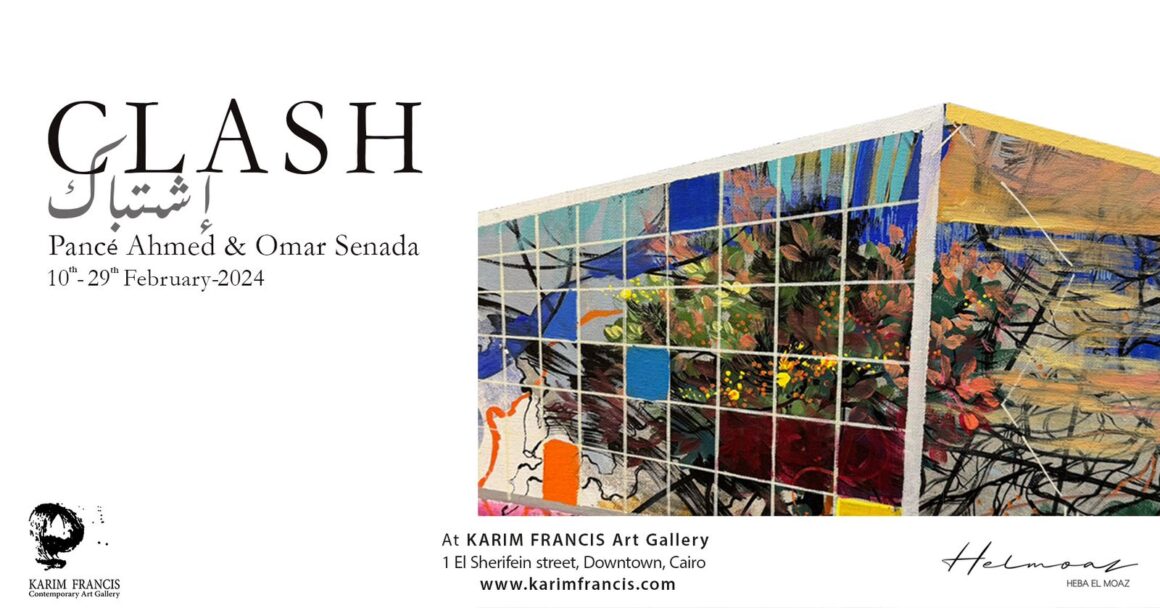Clash اشتباك
Pancé Ahmed and Omar Senada
We have forgotten how to be good guests, how to walk lightly on the earth as its other creatures do. – Barbara Ward
Clash”, a joint art exhibition by the contemporary artists Pancé Ahmed and Omar Senada, showcasing their latest collaborative project as both talents intertwine to create a harmonious fusion in their artworks. It explores the juxtaposition between urban decay (the process whereby a previously functioning city, or part of a city, falls into disrepair and decrepitude) and the resilience of mother nature and the constant clash between one another. Through their multi-layered paintings, Pancé and Omar examine the influence of political institutions on the decay of society and how it projects on us as individuals, raising questions about the future of the environment amidst an age of over consumption.
Through an archaeological lens, Clash tackles the environmental role that topography and politics play in shaping contemporary society. How the shades of urban grey took over nature’s beauty and garbage took over instead. The evolving cartography, as explored by the artists, becomes a symbolic reflection of societal shifts and their impact on humans. The artists also challenge the credibility of state institutions’ propaganda of Egypt’s prominence among nations when the truth, in their opinion, is far from that, leaving behind a society in decay.
The decay theory is a theory that proposes that memory fades due to the mere passage of time. Information is, therefore, less available for later retrieval as time passes and memory, as well as memory strength, wears away. The main reason this occurs in sensory or short-term memory is that we do not need to process and store all the information that we see in the world, so we simply do not recognize or recall it, and it just fades away. The Decay theory serves as a poignant parallel to modern society, where people can no longer face reality because they’re being constantly brainwashed.
Urban decay is the process whereby a previously functioning city, or part of a city, falls into disrepair and decrepitude. The cityscape transforms into a desolate and inhospitable environment marred by abandoned structures, political corruption, and the obliteration of natural and cultural heritage. The city now stands as a testament to the irreversible transformation brought about by neglect and unsustainable practices hanging on a thread by a society that is grappling with its own decline.
The repercussion of man’s reckless intervention that is lacking awareness and sustainability has become clear in the environment. The depletion of limited resources due to unsustainable consumption is rooted in capitalist and materialistic needs that disregard the future. Environmental deterioration is manifested in turning green spaces into urban buildings and industrial areas that pollute the environment, leading the artists to raise questions about the future’s potential for environmental redemption. Through a series of paintings, Clash aims to capture the layers of cement that entomb the city’s landscape, providing a visual commentary on the environmental challenges ahead

